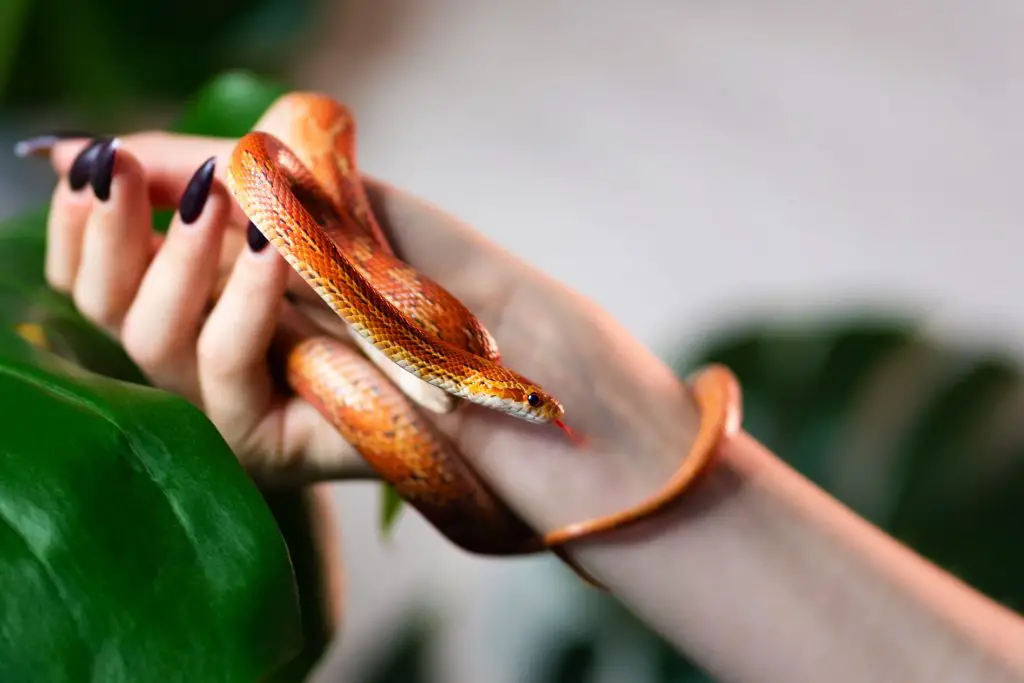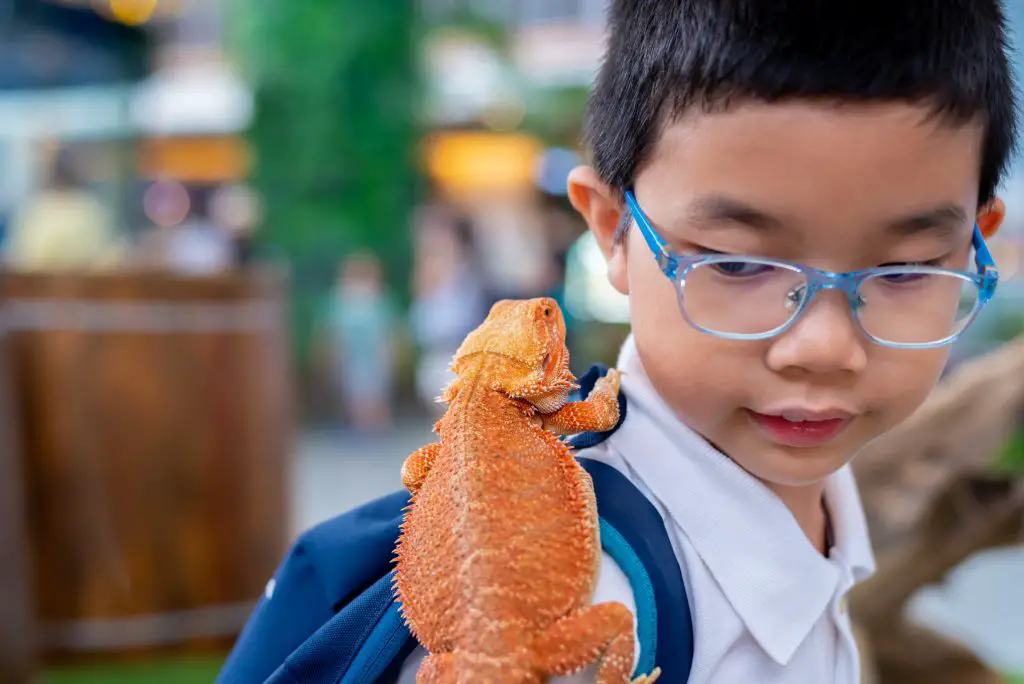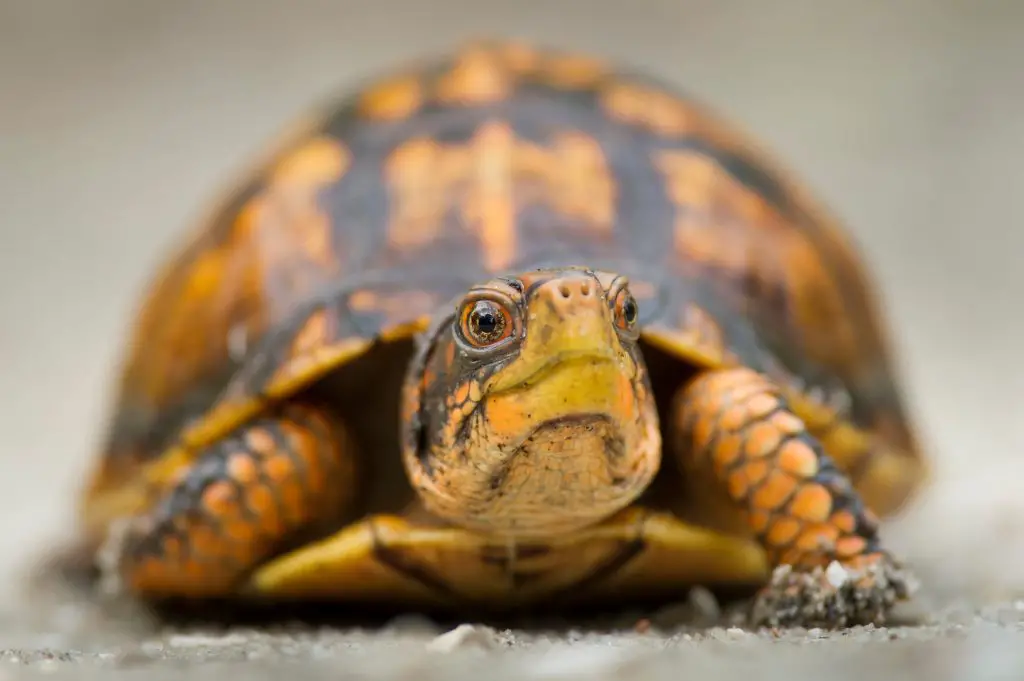Reptiles are often the unique and “cool” choice for a pet, especially for kids. However, most new reptile owners are misinformed about the proper care that reptiles need. In addition, many do not expect reptile care to become challenging and expensive.
Most aspects of reptile care will fall under an adult’s responsibility since it involves heavy tanks, light and heating bulbs, and proper handling.
That being said, owning a pet reptile (or any pet, for that matter) can also be quite rewarding! For children, it can instill responsibility at an early age and provide enrichment in terms of interacting with animals.
Choosing a reptile as a pet can be exciting as there are many kinds to choose from. Make sure that both you and the child understand the type of commitment and responsibility reptile care entails. Reptiles as pets are generally suggested for children 7 or 8 years and above since caring for reptiles is quite demanding.
Important
Reptiles are NOT easier to care for than cats or dogs. They require as much care, even more, because of their specific needs like UVB lighting and correct humidity and temperature levels. Though some reptiles are easier to care for than others, they are generally more challenging pets in terms of care.
Snakes
Snakes are a good option for kids because they are docile and relatively easy to care for. Their enclosures can be as elaborate or as simple as you want, with minimal requirements in terms of equipment.
The main challenge would be feeding snakes. They are carnivorous and need to be fed whole prey (usually pre-killed mice or rats), so squeamish kids should avoid having snakes as pets.
An advantage of snakes is that they only need to be fed once a week or less. However, some adult snakes don’t eat for weeks, so there is a learning curve about their feeding times. Snakes also need less equipment than other reptiles (they don’t need special UVB lighting).
A drawback to snakes is that they are not exactly cuddly and are not the most interactive pets.
Corn Snake
Corn snakes are also active during the day, unlike most snakes, and are a good choice for beginners and kids. They are docile and only grow to about five feet. They don’t require much in terms of an enclosure, just a 20-30 gallon tank with a small, dark place for the snake to hide in and a good heater.
Make sure you place a good lid on your corn snake’s enclosure, as these are good at escaping and hiding. With proper care, corn snakes can live up to 20 years.

Ball Python
Ball pythons are small constrictors that grow from 3-5 feet and can live up to 25-30 years. They make great pets for kids as they are docile, generally gentle, manageable to care for and come in various colors.
As with snakes, a big challenge would be feeding them. Ball pythons, in particular, can be pretty picky, so ensure you get a healthy captive-bred ball python that easily feeds on prey. In addition, ball pythons need an enclosure with a proper thermal gradient and a good hiding place.

Lizards
Lizards such as the Leopard Gecko and the Bearded Dragon are also good options. The small size of leopard geckos makes their enclosure requirements easier to meet, while bearded dragons are easily tamed and more docile.
Lizards are often the most demanding in terms of care, as they need a fair amount of equipment, such as thermometers, special UVB bulbs, and heaters. They also need their enclosure’s humidity and temperature levels monitored constantly.
Other lizards to consider include skinks and the crested gecko though these need slightly more advanced care.
Leopard Gecko
Leopard Geckos are often chosen as pets for kids due to their small size (15-25 centimeters) and relative ease of care. A small 20-gallon tank is enough. There are also a fair amount of morphs and colors to choose from.
It takes a while to tame Leopard Geckos, so patience in handling them with adult supervision for a few minutes each day is essential. They eventually become docile but be careful since these lizards can drop their tails when they feel threatened.
Contrary to what most guides online say, Leopard Geckos still require complete reptile care, including UVB lighting, vitamin D3 supplements, hot and cool hides, etc.
In addition, they are insectivores so a Leopard Gecko’s diet will consist of live insects, which should be considered since some children might be scared of handling insects. Leopard Geckos can live for 10-20 years, which is a long-term commitment.

Bearded Dragons
Bearded Dragons are good pets because of their overall look and ease of handling. However, beardies are challenging to care for. They require large enclosures (about 40-50 gallons for an adult), proper UVB lighting, a heat lamp, suitable substrate, and so on, so caring for bearded dragons can get quite expensive.
Beardies are omnivores that need to eat more insects when they are young and then shift to more vegetables and fruits as adults. Beardies grow up to 22 inches long and live up to 10 years.

Turtles
Turtles used to be popular as great pets for kids, but interest has waned in recent years since caring for turtles can be messy. Aquatic turtles like the Red Eared Sliders (RES) are robust reptiles, but they require a tank with water that needs to be cleaned regularly.
Eastern Box Turtle
A good alternative would be the Eastern Box Turtle, which is a land turtle that requires less complicated care, making them a good option for kids. Eastern Box Turtles do not grow as large as tortoises and can adapt to a wide range of climates, like damp forests and dry grassy fields. They eat plants and insects and are suitable for indoor and outdoor enclosures.
However, Eastern Box Turtles can be sensitive to handling, so younger children may not enjoy the interaction so much. Therefore, a few minutes of interaction is needed each day to help them become comfortable in your presence.

Consider rescuing a reptile in need of rehoming
Consider looking into reptiles available for rehoming. This is a great way to help reptiles that need new homes and interact with reptile owners regarding care. You can save a bit if previous owners include enclosures and other equipment upon rehoming. You might also find reptiles that are already used to being handled, which is better for kids.
What To Consider Before Getting A Pet Reptile
- Proximity to an exotic animal veterinarian or one specializing in the reptile you will eventually choose. It’s always good to be ready for any health issues your reptile may have since not all veterinary clinics can cater to them.
- The reptile’s lifespan is usually 10-15 years or more (up to 25 years for some lizards and snakes), so they are a long-time commitment!
- The reptile’s temperament, ease of handling, and robustness. Kids should always have supervision with the care of any animal. Since some reptiles do not take to handling (or cuddling) well, they may not be the best choice of pet for some children.
- The space, equipment, and specific care each reptile needs. Common house pets like cats and dogs require food, vitamins, and a kennel. In general, reptile care requires a lot more: UVB lighting, heating, a mister for maintaining humidity, the correct substrate, food that can be live (e.g., crickets and worms), supplements, and a big enclosure.
- The climate and weather in your area. Since reptiles are cold-blooded animals, they need external heat to regulate their body temperature. If you live in an area with a significant seasonal change, caring for a reptile will require extra equipment to maintain the temperature levels they need in their enclosures.
Conclusion
Reptiles, in general, are challenging pets to care for, so careful thought must be considered if you want a reptile for your kid. Some reptiles are generally more manageable than others, so these are recommended for children and beginners. However, reptiles have long lifespans, so they are long-term commitment pets. That being said, caring for reptiles can be quite the experience as these are very unique and fascinating creatures.
References
Basic Reptile Care Guides
Reptile Basics | Pets 4 Life
Reptile Care for Beginners: A Helpful Guide
Comprehensive Reptile Care Guides
Basic Reptile Husbandry
Management and Husbandry of Reptiles
Comprehensive list of plants that reptiles can eat:
Edible Plants List


